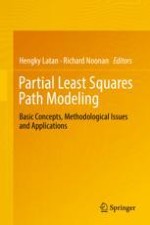2017 | OriginalPaper | Buchkapitel
9. Treating Unobserved Heterogeneity in PLS-SEM: A Multi-method Approach
verfasst von : Marko Sarstedt, Christian M. Ringle, Joseph F. Hair
Erschienen in: Partial Least Squares Path Modeling
Aktivieren Sie unsere intelligente Suche, um passende Fachinhalte oder Patente zu finden.
Wählen Sie Textabschnitte aus um mit Künstlicher Intelligenz passenden Patente zu finden. powered by
Markieren Sie Textabschnitte, um KI-gestützt weitere passende Inhalte zu finden. powered by
